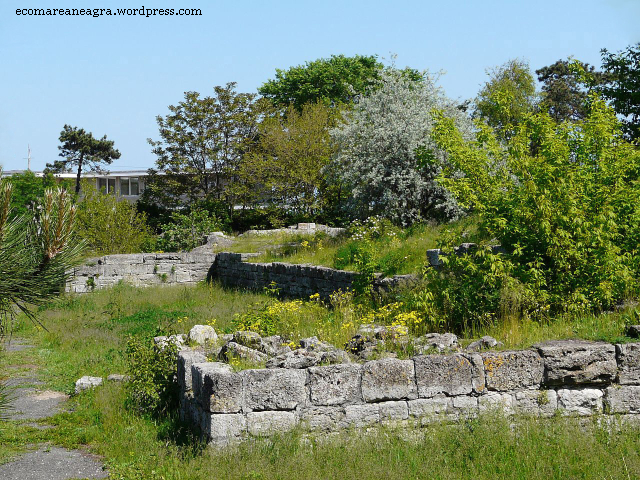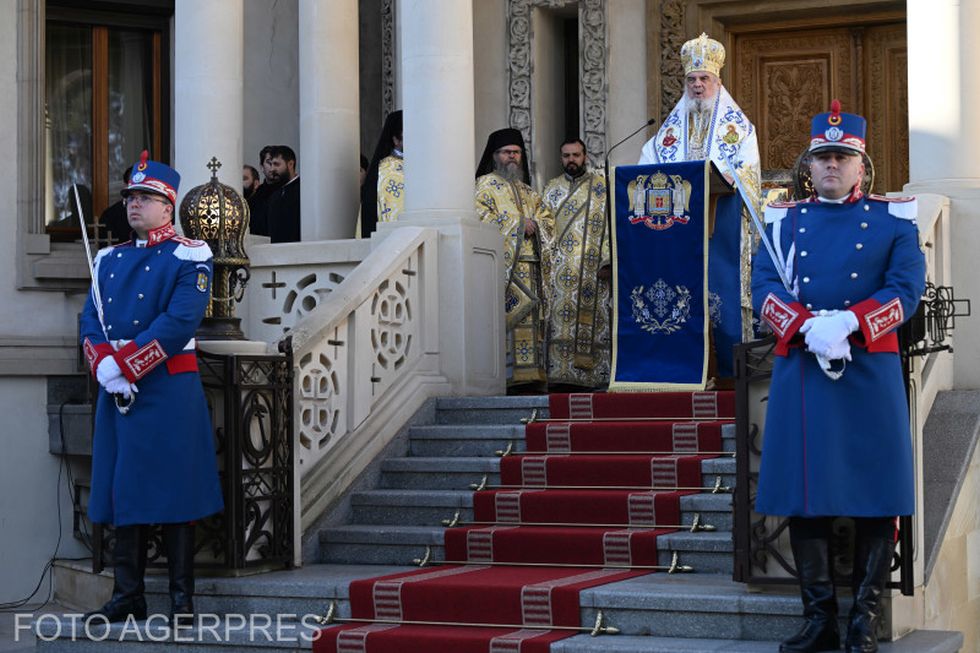Callatis, the ancient city on the Black Sea coast
The history of the ancient Greek city of Callatis, today Mangalia, with the curator of the Callatis Museum.

Steliu Lambru, 30.03.2015, 13:47
Between the 8th and 6th centuries BC, a phenomenon occurred that historians refer to as the great Greek colonisation. Colonists headed out from the great centres of ancient Greek civilisation in all directions, founding urban centres that kept close commercial, cultural and political ties with the cities of origin. The Black Sea area, in fact, was surrounded on all sides by Greek colonies.
On the western shores of the Black Sea, on what is now Romania, the Greek colonists from Miletus, on the eastern shore of the Ionian Sea, founded the cities of Histria, also known as Istros, and Tomis, while the colonists from Heraclea Pontica, on the southern shore of the Black Sea, 100 km east of the Bosphorus, founded the city of Callatis.
Experts and archaeologists agree that Callatis was the most important cultural centre in antiquity in the entire region of Dobrudja, an area lying between the Danube and the Black Sea. It was a great economic centre, especially thanks to its harbour. Callatis was built by Greek colonists from Heraclea Pontica on the site of an older Getae settlement known as Acervatis or Cerbatis. The inhabitants were at first a mixture of the local Getae population and the Greeks newly arrived.
On the site once occupied by Callatis we find today the town of Mangalia, with a population of around 33,000 inhabitants. Sorin Marcel Colesniuc, the curator of the Callatis Museum, which is part of the Callatis Cultural Complex, told us about what has survived to this day of the ancient city of Callatis:
“First of all, we have a number of inscriptions we have dug up in Mangalia, as well as funeral stones featuring a number of ancient teachers. We also have the ancient writers in the old city of Callatis, such as Istros of Callatis, Demetrius of Callatis, Herakleides Lembos, and the philosopher Thales. In Mangalia, we found the only ancient papyrus discovered on Romanian territory. It was uncovered in 1959, and because the country didn’t have the proper conditions to preserve it, it was sent to Moscow. It was believed lost to researchers in Romania for half a century. I looked for this papyrus together with my colleague Ion Paslaru and found it after 2 years of searching, in 2011, at the Moscow Centre for Restoration and Conservation. That year we brought back to Romania this unique document. We don’t know exactly what the text says, because it disintegrated when exposed to air and sun after being found. It could have been lost forever, but luckily it got to Moscow and it was preserved. Today there are 154 surviving fragments, and on the larger fragments we can make out letters in ancient Greek. We don’t have any complete word, just a few letters here and there. The papyrus dates back to the 4th century BC.”
We asked Sorin Marcel Colesniuc what visitors can see in the Callatis Museum:
“The museum exhibits many architectural pieces, such as columns, capitals, architraves, friezes with metopes, cornices featuring bucrania and various ceramic vessels, the most important being the amphorae. There are also oil lamps, aqueducts, Tanagra figurines, vessels made of glass, funerary stelae, inscriptions, depictions of the gods, jewels, coins and metal objects. In front of the museum, you can see lots of architectural fragments. There is also an architectural park, as well as the sites around Mangalia. You can see the north wall of the city of Callatis and its north-western wall which has been dug up and extensively studied. Another site worth a visit is a princely tomb located 3 km away from Mangalia, on the way to the village of Albesti.”
The ancient harbour provides significant insight into the economy of the ancient city of Callatis. Unfortunately, however, it lies today below the sea surface. Sorin Marcel Colesniuc, the curator of the Callatis Museum, explains:
“The harbour in Callatis was built in the 4th century BC. Unfortunately, the sea level went up about 2 metres in the last 2,000 years, so the ports and its structures are now under the Black Sea. In the 1960s and 1970s, Constantin Scarlat did an underwater survey and drew a map of the ancient harbour. He found many architectural fragments, lots of ceramic pieces, especially shingles and amphorae, and we have the map he published in 1973 in a science journal in Cluj. The map includes a few sunken ships as well. We worked with companies from Italy and Hungary which came to scan the bottom of the Black Sea in the Mangalia area, and their scanners have confirmed the presence of these ancient shipwrecks.”
From a flourishing city, Callatis gradually suffered a dramatic decline, which Sorin Marcel Colesniuc says was the result of migrations:
“In the 2nd century AD, the area saw the arrival of migratory populations. The first are the Costoboci, followed by the Goths, the Carpi and the Huns, in the 5th century. The Avars and the Slavs arrived in these parts in the late 6th and early 7th century. They dealt the final blow to Callatis, and for the next 300 years nothing is known of the city. No archaeological traces were found from this period. Later, around the 13th century, we encounter for the first time the name of Pangalia to refer to the site of the ancient Callatis. The Mangalia was first mentioned in historical records in 1593.”
As is often the case with history, few traces remain of what was once the ancient city of Callatis and they tell us very little about the people who lived here.






























